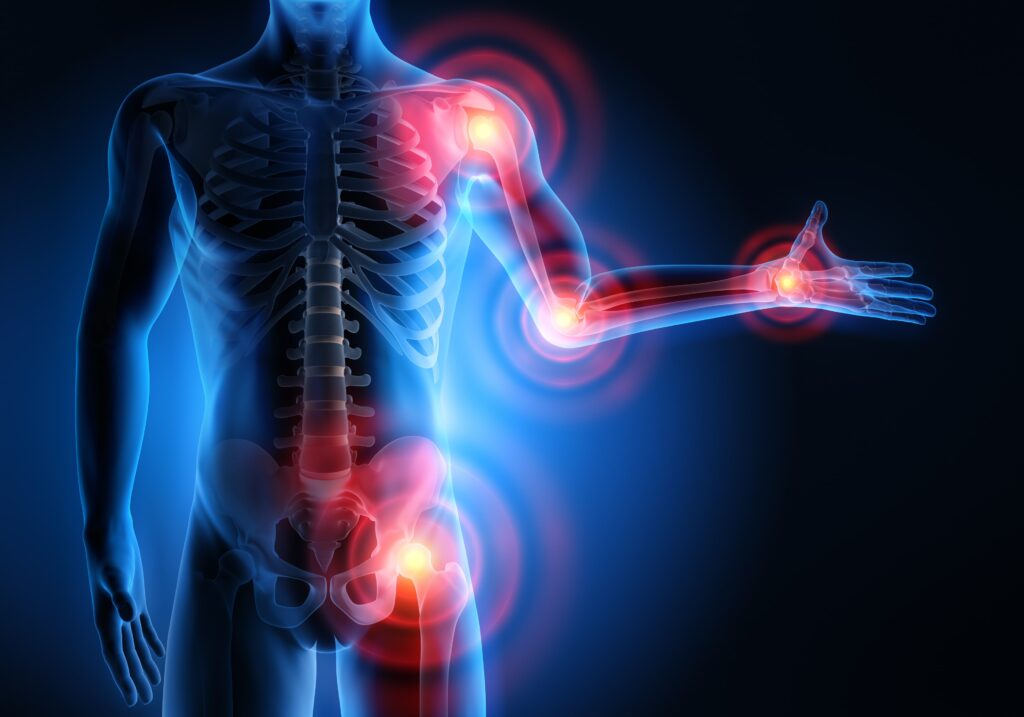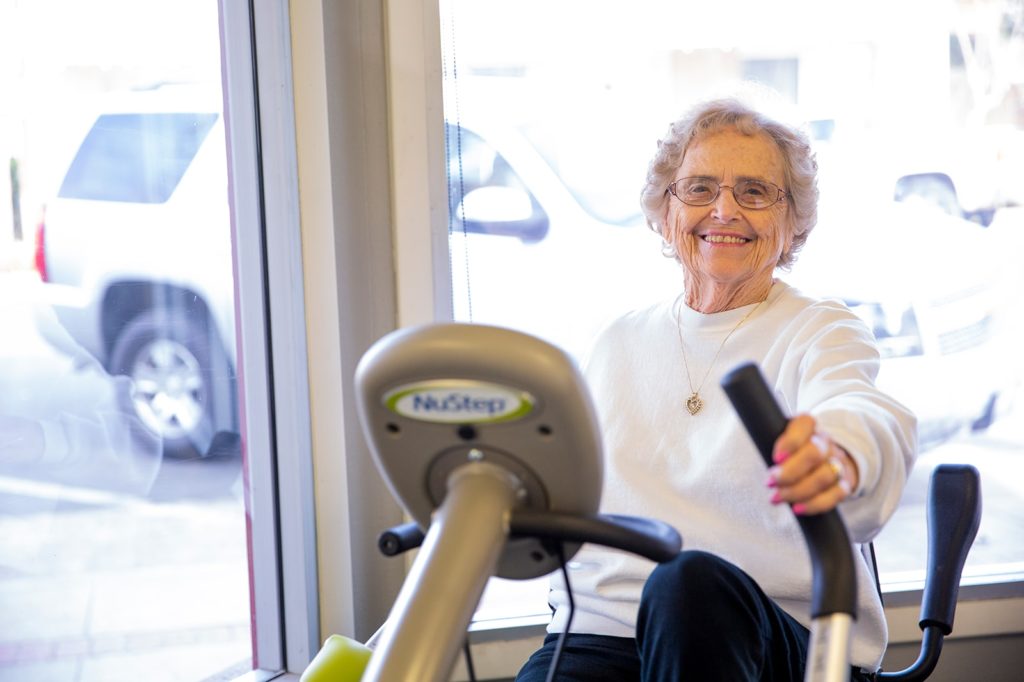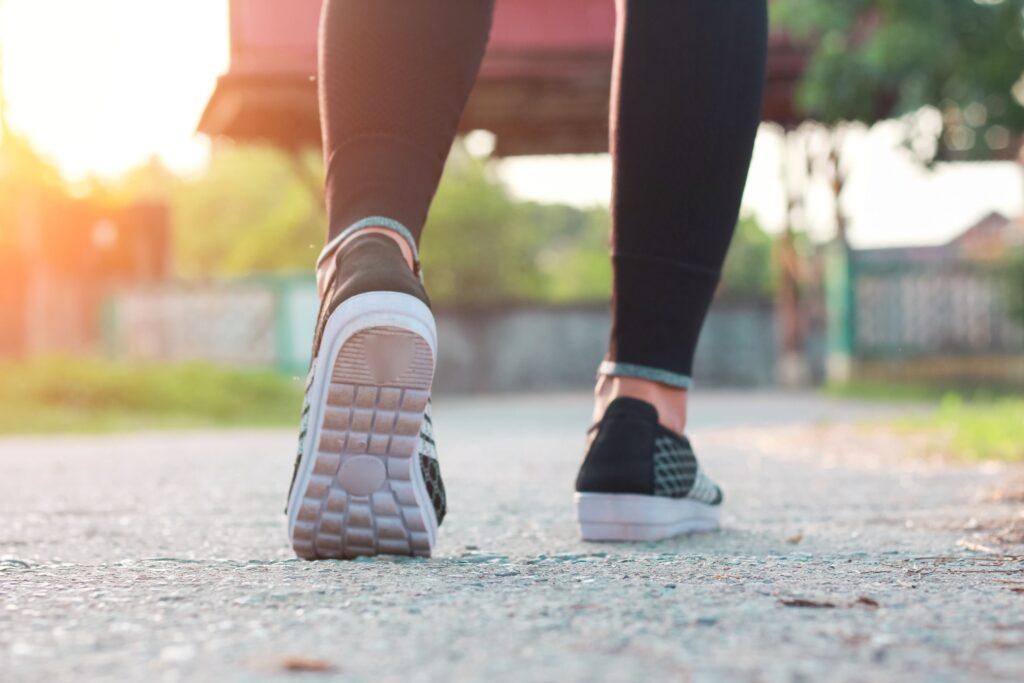Have you consulted a doctor for an X-ray and were discouraged because you were told that you have osteoarthritis? Have you experienced random aches and pains and, after some internet sleuthing, suspect that you may have arthritis? This can be a daunting thought as osteoarthritis is an ever-increasing challenge that many people face as age increases and bodies get older, but physical therapy can help you manage the pain and discomfort from this chronic issue.

What Is Osteoarthritis?
Osteoarthritis (also known as “OA”) is derived from the terms “osteo”, which means “bone”; “arthro, which means “joint”; and “itis,” which means “inflammation.” Osteoarthritis is inflammation of the joints between bones. It can occur in joints throughout the body but is most common in the hands, hips, and knees.
How Does Osteoarthritis Work?
OA is caused by the wearing away of the joint’s protective surfaces (the cartilage on the tips of the bones), which results in the body’s natural response of inflammation (the call for natural healing fluid/substances to localize to the affected area). The inflammation, by nature, is present to help heal the joint irritation, but when it remains in the joint for extended periods, it can become painful and cause further deterioration of the joint surfaces.
Symptoms of Osteoarthritis
OA has a fairly common behavioral pattern with how patients experience pain. OA is often achy in nature but can progress to become sharp with certain motions of the joint as the joint surfaces change over time.
How Osteoarthritis Affects the Body
Because of the way each part of the human body works together with other parts, OA can cause issues not only at the affected joint but also in the surrounding areas and regions of the body.
For example, OA in the hips can cause muscles around the hip joint to become tight and/or weak because of pain in the hips, which then causes the body to put more pressure on the knees and the lower back (above and below the hip joints). This results in the muscles around the knees overworking and the joint mechanics in the lower back becoming inefficient. This is why early treatment and self-management techniques is so important, so that problems with the body’s movements do not compound in joints surrounding the OA-affected joint.
How Osteoarthritis Affects the Mind
The intense pain and deficits described with OA can be discouraging. The pain is present with every movement and is a constant reminder that something is “not quite right” in your body. This can lead to mental and emotional stress as participation in daily tasks can become limited and enjoyment of preferred activities can decrease.
Not only does the pain promote a sedentary lifestyle, without much physical activity, but this also leads to less social activities, isolates affected individuals because of their inability to participate, and, in severe cases, promotes a negative emotional cycle leading to helplessness. While not all people with OA have severe emotional outcomes, it’s still important to consider mild emotional stress that can occur—the mental and emotional anguish is worth preventing with physical therapy, which can improve your lifestyle outcomes.
Why Is Osteoarthritis Management Important?
Osteoarthritis is not life-threatening but can decrease overall activity levels due to pain. With less movement and activity, there can be a quick decrease in quality of life and general health along with an increase in other health complications (heart and lung problems, increased fall risk, etc.). Getting OA treatment and forming a feasible management plan is essential to preventing the progression of issues affecting daily life.

Physical Therapy Interventions for Osteoarthritis
PT can help target specific muscle groups without exacerbating co-morbidities. As an osteoarthritic joint degenerates, it can cause muscle imbalances (some muscles become too tight, while others become too weak) as well as pain and inflammation, causing stiffness and loss of motion.
Physical therapy is designed to identify and address the specific deficits found pertaining to the affected joint (stiffness, muscle tightness, or muscle weakness) without causing increased irritation to the joint. Methods include soft tissue mobilizations, joint mobilizations, therapeutic exercise, and neuromuscular training. This allows for muscles to be strengthened, joint motion to increase, and muscle activation to promote stability for dynamic activities (walking, bending, and lifting). This results in off-loading of the degenerative surfaces within the joint and allows for decreased inflammation with daily tasks.
How Does Physical Therapy Help With Osteoarthritis?
While physical therapy can help address these deficits, it does not completely fix the problem (as with a total knee replacement to replace the degenerative joint surfaces). Therefore, efforts during physical therapy are geared towards reducing pain, returning to basic activities, and education/training for management techniques to continue outside of formal physical therapy interventions. Increased quality of life and independence with self-management are the goals of PT and self-management, without waiting for full degeneration of the joint to the extent of needing a full knee replacement.
Physical therapy is an opportunity for someone facing an OA diagnosis to create a management strategy with the help of an experienced physical therapist to maximize motion while minimizing joint pain. With the help and skill of a PT, each person can have their specific joint deficits addressed and their specific needs and desires met through the creation of a treatment plan.
Physical therapy can include exercise, stretching, and hands-on techniques. Education is ensures that exercises can be continued at home in ways that avoid painful movements and increase quality of life.
Physical Therapy's Role in Increasing Mobility + Reducing Pain
Because the human body has many systems working together, exercise (including when targeting deficits of OA) can affect all areas of the body. Various other common medical conditions (high blood pressure, diabetes, heart arrhythmias, etc.) require monitoring and supervision with increased exercise. Physical therapy can provide medical assessment and symptom monitoring while new exercises are introduced, and help set up a treatment plan to teach each individual how to monitor and be self-aware of how exercise is affecting their body. While it is good to exercise (particularly with symptoms of OA), caution is needed when other medical issues must be considered.

Exercising with Osteoarthrosis
OA typically responds best to gentle movement—pain is prevalent with initial movements (after resting or in the morning after sleeping) and will lessen as the joint warms up. This allows for a window of opportunity for physical activity to be an important part of reducing pain.
Muscular strength and stability are very important in order to offload the weight of the body on unprotected joint surfaces during movement. Muscles often become weak because it is painful to move the affected joint, but then the weight of the body has nothing to be held up by other than the joint surfaces.
While movement can help warm up the joint and strengthen the muscles, too much movement can also cause joint pain to increase. This is when most individuals are affected by OA. As muscle tissue fatigues and inflammation in the joint builds, pain can increase with prolonged joint movement or prolonged weight-bearing (i.e. even standing still if OA is in the legs).
Rest is necessary to allow the body to offload the joint and reduce inflammation around the joint surfaces. Your trusted physical therapist can help you determine the amount and type of movement your body can tolerate and teach you compensatory techniques for doing normal daily tasks without flaring the pain in the affected joint.
1. Walking
General exercise is very necessary for maintaining joint health and muscular strength. While some joints have increased pain related to OA during prolonged walking, there are a lot of benefits to walking that can be a huge stepping stone toward preventing exacerbations of other health issues.
Walking increases the heart rate, allowing for improved cardiovascular health. It promotes the circulation of joint fluid, blood flow, and inflammatory fluids which allow for greater healing and decreased pain. However, when OA affects the joints in the legs, walking can be a source of pain. It’s important to consult a doctor or physical therapist when it comes to utilizing walking as a prevention/treatment approach for joint pain.
2. General Movement
Exercises and interventions are specific to each joint and the extent of the degeneration. However, one principle that remains true is that gentle movement helps to decrease pain. Where this becomes difficult is knowing how much, what kind, and when to stop. Various forms of exercise, such as bicycling or swimming, can yield the benefits of exercise without significant stress on the joints of the legs.
It is important to pay attention to what is felt DURING exercise (regarding increased or decreased pain) as well as what is felt AFTER exercise (1-2 days after). Irritation to the joint can be revealed with latent or acute pain and should be monitored closely before progressing intensity or frequency of exercise.
Formal consultation or physical therapy intervention is the best way to learn what the specific joint needs, but gentle movement to help ease stiffness and tightness in the muscles is a good way to begin.

PT Increases Osteoarthritis Patients' Quality of Life
While osteoarthritis may change one’s lifestyle and habits, it shouldn’t have to keep quality life from happening. It affects various joints throughout the body in varying degrees, and its degenerative processes can cause issues in the surrounding joints. Progressive inactivity in our culture as well as high demand on repetitively used joints puts many people at risk for developing chronic pain that is related to osteoarthritis. Physical activity, such as walking, swimming, bicycling, can be helpful. Physical therapy can also fine-tune a treatment strategy for pain control, self-management, and independence.
Through physical therapy, goals of increased physical activity, participation with family and community events, and confidence with managing pain levels can be achieved with a tailored approach to each individual. Here at PRO~PT, we have a wide range of styles, personnel, and ideas to help achieve these goals related to OA, and to maximize the ability to enjoy life!








